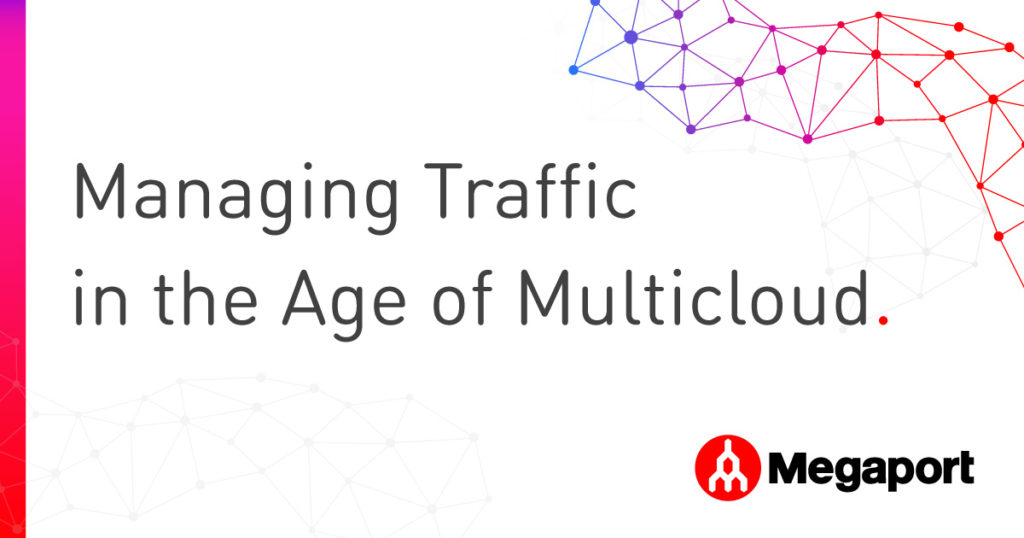
Managing Traffic in the Age of Multicloud
- July 30, 2019
How virtual routing solves the challenges associated with managing multicloud connections.
There’s no doubt for those working in enterprise IT, multicloud is an exciting concept. Getting the best that the cloud has to offer from multiple expert partners, crafting your own ideal cloud partner portfolio and environments, and reducing the risks associated with relying on a single cloud provider – for many, it’s the stuff of dreams.
But for those in charge of managing network traffic, the thought of routing and controlling workloads between diverse clouds can be enough to inspire sleepless nights. Typically, there are three main concerns network teams have when it comes to multicloud traffic management:
Worry #1: It’s going to be complex
Traditionally, managing traffic across multiple cloud zones requires you to purchase separate network capacity for each zone, and terminate traffic into a physical router that’s managed and owned by you. That can take a lot of time and effort to set up – and even when it’s executed perfectly, can result in wasted capacity.
Worry #2: It’s going to be expensive
That approach isn’t just complex and time consuming, it’s also expensive. In addition to acquiring extra routing hardware and paying for the space and power to run it, there are significant capacity costs to consider. If you can’t route traffic efficiently and flexibly, the entire approach to multicloud traffic management can end up hugely expensive in both the short and long term.
Worry #3: It’s going to mean more hardware to manage
Finally, one of the biggest concerns network managers have about this approach is that it’s counterintuitive. With more and more network functions moving into the cloud – and your company embarking on a transformational multicloud journey – adding new hardware and hairpinning cloud traffic to it simply doesn’t make sense. It’s going to push the network team back towards traditional hardware-based management activities when they should be focusing on developing cloud skills and innovating using virtualised networking tools.
Cloud routing: Virtualising cloud traffic management
Fortunately, a new solution has emerged to help solve these challenges and put cloud traffic management capabilities where they belong – in the cloud.
Next-generation routing software like Megaport Cloud Router (MCR) virtualise the routing functionality of your architecture and enable businesses to flow traffic directly between cloud providers using a global Software Defined Network.
Because router functionality is virtualised, there’s no need for you to manage physical hardware, it can be easily managed alongside the rest of an organisation’s networking functions and capabilities. It’s easier to configure, easier to manage, and offers significant cost and complexity advantages over deploying additional physical routers in a data centre .
But most importantly, virtual routers enable you make routing decisions closer to the cloud. There’s no disconnection between where you monitor and manage your services and where you manage and route traffic – enabling you to make faster decisions, streamline management processes, and add routing to the long list of routing network management tasks that can be completed in seconds through simple cloud-based dashboards.
Introducing a revolution in cloud routing
Cloud technology never stops evolving, so neither do the networking solutions designed to support it. Megaport recently unveiled a major update to Megaport Cloud Router, to ensure it’s completely equipped to handle what today’s networking experts demand, and what the future may hold for complex multicloud networks.
To help make routing traffic across multicloud environments simpler and more intuitive than ever, we’ve added new capabilities including:
· Routing priority for virtual cross connects to help users set preferred routes for redundancy
· Faster fault detection to help network teams resolve issues faster
· Google API optimisation to improve how MCR interacts with Google Cloud
· BGP on/off toggling, enabling users to end BGP sessions without impacting virtual cross connects
As the multicloud environment continues to shift, Megaport is continuing to make traffic management across multicloud networks as simple, cost-effective, and manageable as possible. So, whatever a company wants to get from the cloud, and however complex their portfolio of cloud services and solutions may be, they’ll always have a way to control it without introducing additional complexity.
To find out more about the Megaport Cloud Router, including how we can help you take control of traffic management and routing across complex multicloud environments visit the MCR page or contact us today .


